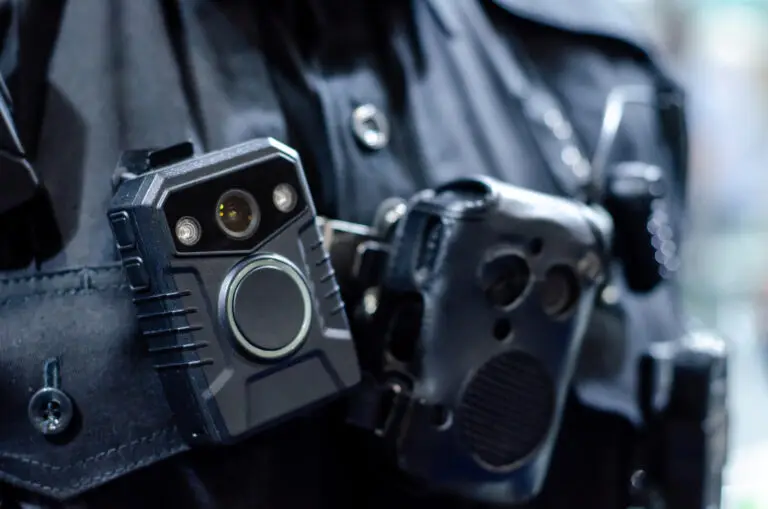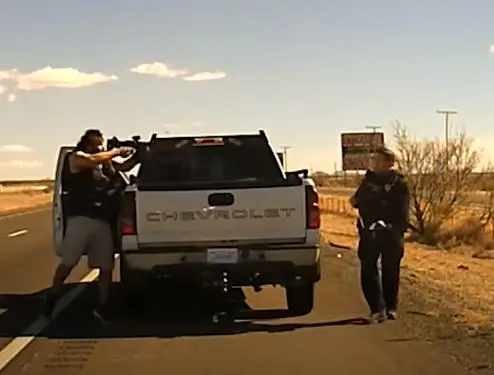
Police officers have always been notorious for seeking short cuts when it comes to procedure. The police body camera deters the short cut artist, and that’s a good thing.
~ Barry M. Baker Tweet

Detective Lieutenant Barry M. Baker (ret.) is a 32 year veteran of the Baltimore Police Department.
The police body camera enhances a police officer’s ability to document details that could otherwise be corrupted by a number of factors. Time lines are always of utmost importance, and the camera can chronologically track events to the millisecond. Statements made by suspects and witnesses can be recorded with absolute accuracy.
The police body camera is popularly referred to as Body Worn Camera or (BWC). Police work is governed by more written procedures than you can imagine, and one of those will govern the BWC. I’ve linked you here (PDF) to the Baltimore Police Department’s policy for BWC use. This policy may first appear to be onerous, but it’s just a matter of establishing the routine.
Adherence to Police Procedures – Police Body Camera
Police officers have always been notorious for seeking short cuts when it comes to procedure. The police body camera deters the short cut artist, and that’s a good thing. When your camera is in recording mode, two important things will be accomplished. You’ll remain alert to your compliance to professional standards, and your adherence to established procedures.
You’re always going to be in jeopardy for false complaints concerning your conduct. No matter how frivolous and lacking in evidence a complaint may be, it will be investigated. The police body camera can provide quick resolution. In the past, such an investigation could consume many hours without providing a definitive conclusion.
Camera Angles and the Police Body Camera
The police body camera is a great documentation device, but it’s not perfect. Camera angle means everything when video is used to make critical determinations of an event. Think about this. Your BWC provides only one angle, and it may or may not depict exactly what you’re seeing. The camera is worn on your chest 12 inches – more or less – below your eye level.
For example, you apply deadly force against an armed suspect who is lying on the ground behind a retaining wall. You’re in a position where you can see over the wall, but the suspect is concealed from your camera’s view. In this example, the camera supplies context, but it won’t verify that the suspect was attempting to shoot you.
Camera Angles can be Deceptive
From the very beginning of motion pictures, Hollywood perfected camera angle deceptions. They didn’t have the aid of computers, but they produced totally realistic deceptions. The fight scene was the most common. You knew that the punches weren’t landing, but they sure looked like they did.
Just because something is being filmed doesn’t mean it’s producing an accurate representation of what is happening. There will be other factors at play, but the camera’s angle of view will always be the main factor.
Ask the National Football League
It wasn’t until 1985 when the NFL started to consider use of the instant replay to adjudicate plays on the field. They did a lot of research and experimentation; until, the process was fully implemented in 2007. The interesting part is the technological process utilizing television network cameras to provide all the camera angles:
Sunday Night Football regularly uses 30 to 35 cameras and has used as many as 43 for a single game, according to NBC.
Thursday Night Football uses around 35 to 45 cameras during its broadcast of primetime games, according to FOX.
Monday Night Football employs as many as 49 cameras for its broadcasts, according to ESPN source.
A Picture can be worth a Thousand Words – Dash Cam Video
The Dash Cam Video has been in many police cars since the 1980’s, and it’s still as relevant today as then. It’s not versatile as compared to the police body camera, but it can often place an event in better context.

Related Content for Police Body Camera
Advertisements


